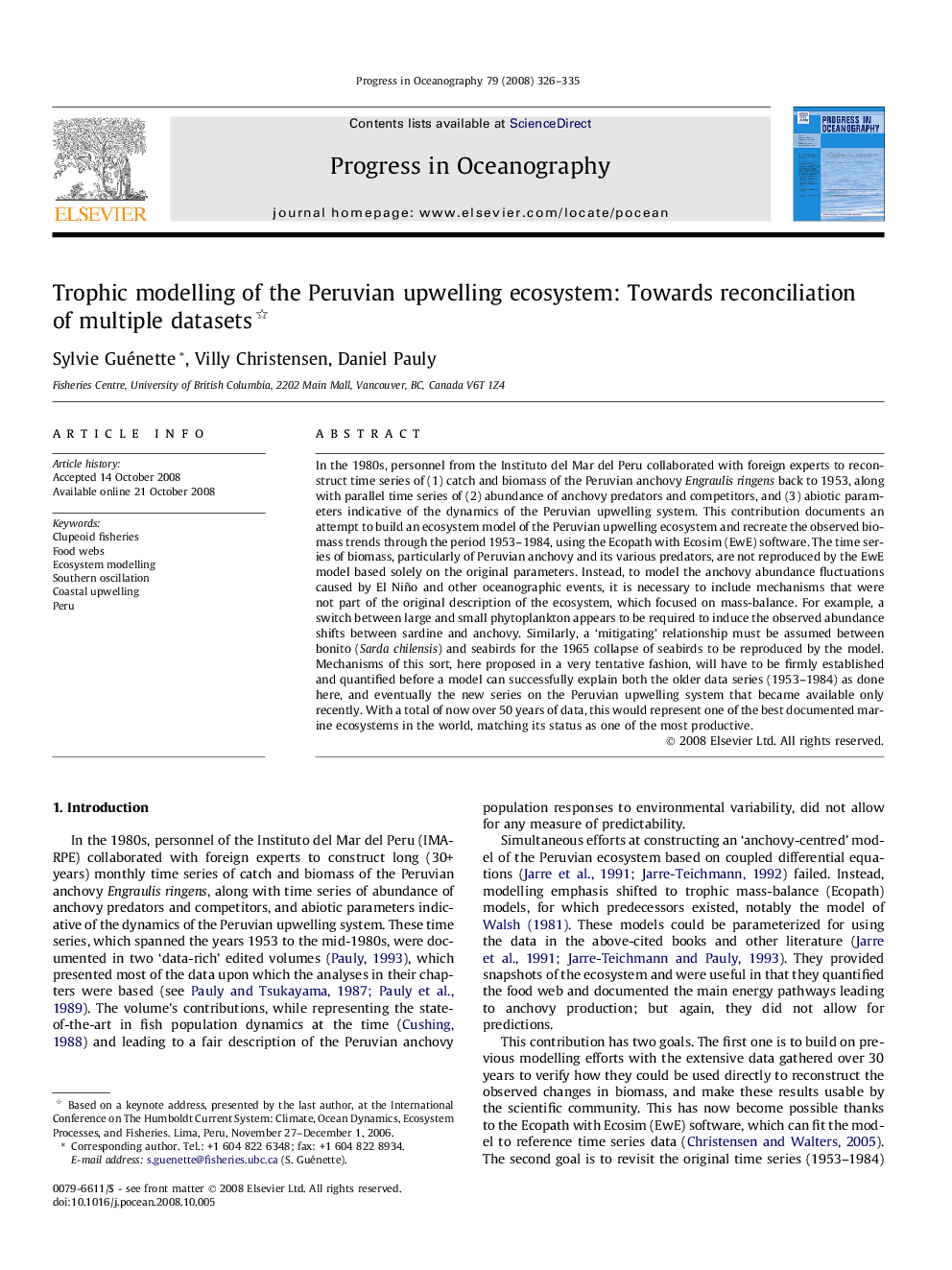| کد مقاله | کد نشریه | سال انتشار | مقاله انگلیسی | نسخه تمام متن |
|---|---|---|---|---|
| 4553644 | 1627969 | 2008 | 10 صفحه PDF | دانلود رایگان |

In the 1980s, personnel from the Instituto del Mar del Peru collaborated with foreign experts to reconstruct time series of (1) catch and biomass of the Peruvian anchovy Engraulis ringens back to 1953, along with parallel time series of (2) abundance of anchovy predators and competitors, and (3) abiotic parameters indicative of the dynamics of the Peruvian upwelling system. This contribution documents an attempt to build an ecosystem model of the Peruvian upwelling ecosystem and recreate the observed biomass trends through the period 1953–1984, using the Ecopath with Ecosim (EwE) software. The time series of biomass, particularly of Peruvian anchovy and its various predators, are not reproduced by the EwE model based solely on the original parameters. Instead, to model the anchovy abundance fluctuations caused by El Niño and other oceanographic events, it is necessary to include mechanisms that were not part of the original description of the ecosystem, which focused on mass-balance. For example, a switch between large and small phytoplankton appears to be required to induce the observed abundance shifts between sardine and anchovy. Similarly, a ‘mitigating’ relationship must be assumed between bonito (Sarda chilensis) and seabirds for the 1965 collapse of seabirds to be reproduced by the model. Mechanisms of this sort, here proposed in a very tentative fashion, will have to be firmly established and quantified before a model can successfully explain both the older data series (1953–1984) as done here, and eventually the new series on the Peruvian upwelling system that became available only recently. With a total of now over 50 years of data, this would represent one of the best documented marine ecosystems in the world, matching its status as one of the most productive.
Journal: Progress in Oceanography - Volume 79, Issues 2–4, October–December 2008, Pages 326–335